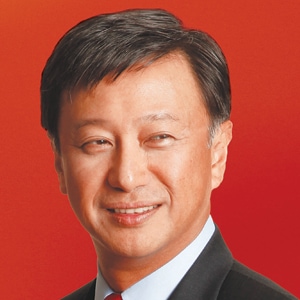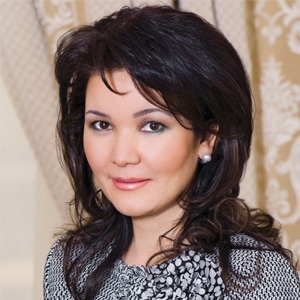In meeting the challenges of the last decade, Asian banks have prepared themselves well for the coming years.
The challenges Asia’s banking industry faced in 2016 will be the prevailing themes shaping the industry over the next decade: declining return on equity, the need to recapitalize stretched balance sheets compromised by nonperforming loans (NPLs), and industry disruption from nonbank competitors and fintech.
During Asian banking’s “Golden Decade” of 2005–2015, which saw the region’s share of global banking profits soar from just under 30% at the start of that decade to almost 50% by its end, everything seemed almost outrageously easy. Asian banking basked in consistently rising profits, a rapidly expanding client base and healthy balance sheets—all in the context of consistent annual gains in national GDP. In 2016 that easy game began to seem like a rapidly fading memory.
It’s not all doom and gloom, however; and if 2016 is anything to go by, should the challenges continue to be addressed, a reinvigorated Asian banking industry beckons in the coming years.
Global Finance’s banking award winners demonstrated cognizance of these challenges in 2016 by their actions and by performance in terms of financial metrics, reputation and long-term momentum. The banking terrain in which they operate is marked by stark contrasts, from the mature, consolidated sectors of Australia, China, Singapore, Japan and South Korea to the underbanked hinterlands of Southeast Asia and the frontier economies. Profit has been easier to find in this “Wild East”—which in some ways makes the achievements of the winners in mature markets even more impressive.
In China, big banks have seen their metrics deteriorate as a result of slower GDP growth, as the authorities look to redirect the country’s “business model” from reliance on export of cheap manufactured goods to reliance on domestic demand and export of services. ICBC is a vast behemoth of a bank, engaging in just about every activity one expects to see from a universal bank, and active not only across the region but also around the globe. Despite the substantial risks inherent in the rapidly shifting Chinese financial landscape and the potential for much, much worse results, profits were up a modest half a percentage point in 2016, earning the bank the Asia-Pacific regional crown.
In Japan, Mizuho has distinguished itself against an array of challenges facing the country’s financial sector, from the erosion of margins due to the Bank of Japan’s negative interest rate policy to the hefty burden of tighter global financial regulation and the bewildering speed with which technology is radically altering the banking landscape. Mizuho stood out against the competition thanks to its “One Mizuho” initiative, a medium-term business plan that aims via collaboration to leverage its banking, trust banking and securities divisions with the goal of becoming Japan’s number-one financial services consulting group.
The bank is the only lender to have branches in each of Japan’s prefectures, and it has wide geographical reach internationally with 36 overseas subsidiaries in the Americas, Europe and Asia.
Commonwealth Bank of Australia managed to survive an unpopular year for banking in the Aussie consciousness, where there had been heightened public scrutiny of banks’ services and advice. Undaunted, CBA strengthened its equity base with an A$5.1 billion (US$3.9 billion) capital raising in the first half of the year; and although this was dilutive to ROE, the bank maintained its position at the top end of the global banking community in terms of capitalization. Its liquidity coverage ratio is also one of the highest among banks globally.
Perhaps CBA’s strongest suit in the awards assessment was its holding of the top spot for retail-customer satisfaction for 13 consecutive months up to mid-2016, and 22 consecutive months in the top spot for small-business satisfaction.
The banking environment was less challenging in neighboring New Zealand, which represents something of a countercyclical outlier among the developed economies; employment returned to pre–global financial crisis levels in 2016, while investment, consumption and domestic demand were strong throughout the year.
Westpac New Zealand was able to take advantage of these underlying economic positives to stand out among the local competition. Cash earnings were up, and the bank’s funding position and net interest margin were strengthened; impairments were down, and the bank’s strong balance sheet position enabled it to best the competition in winning new loan mandates.
South Korea hosts an equally “mature” banking market, where the familiar symptoms of the rapid consolidation that began in the late 1990s, as well as a relatively high household debt, haunt the industry in the form of ever-declining net interest margins and low ROE.
Shinhan Bank managed to keep its metrics looking healthier than the competition in 2016, with highlights including Korean banking’s lowest cost-to-income ratio (48.7) and a decent 8.6% ROE. Shinhan is also staying ahead with heavy investment in fintech, where it is the pioneer in South Korean banking.

In 2016, DBS managed to weather difficult times in Singapore’s banking industry and come out the stronger for it. “As a bank born and bred in Asia, DBS understands the intricacies of doing business in the region’s most dynamic markets. Our strategy is predicated on Asia’s megatrends, including the rising middle class, growing intraregional trade, urbanization and the rapid adoption of technology that is fueling new innovations,” says Sim S. Lim, Singapore country head for DBS. “Despite the challenging operating environment, we made good progress on our strategy, delivering strong operating performance and cost efficiencies as well as solid returns. The bank’s franchise resilience is the payoff from investments made in recent years to build multiple business engines and to digitalize the bank.”
Banking in Hong Kong also had a challenging 2016, due to sharply lower demand for loans from the former British colony and from Hong Kong. The Bank of East Asia, Hong Kong’s third-largest bank, saw its profits fall a by third to a seven-year low against this backdrop. A further kicker was provided by a deteriorating NPL book, although its Tier 1 capital ratio improved a few points to 14 and overall capital adequacy remained stable at 17.4%. The bank expects asset quality to continue to improve, as it began to do toward the end of 2016.
Just a ferry ride away, the former Portuguese enclave of Macau has been weathering the storm of sharply reduced mainland Chinese tourism to its lifeblood casino industry. ICBC Macau, the biggest local bank, with $26.2 billion of assets—and healthy annual growth of 9%—dominates the local banking industry via 19 branches and three subsidiaries. Its $282 million after-tax profit in 2016 was testament to ICBC’s local dominance as well as its long-term prudent risk management; it has just 0.1% of NPLs and enjoyed a decent if not flashy 12.6% ROE last year.

Banking industry returns in Malaysia in 2016 were some of the highest for the region’s more-developed markets; and even though the country’s large exposure to oil prices has knocked growth, banks have found ways of retaining profitability.
Public Bank Berhad led in this respect, with a healthy 16.5% ROE last year, the country’s biggest take in terms of total assets, the highest loan growth (7.5%), the lowest NPLs (0.5%) and above-industry-average deposit growth (1.8%).
It was no surprise then, with statistics like these, that the bank scored the highest EPS growth in Malaysia’s banking industry last year with a heady 134.8%.
Outside these data points, Public Bank is leading the way with heavy investment in fintech, and the development of electronic channels and innovative cash-management solutions.
Neighboring Brunei Darussalam faced the same homegrown dependence on oil trade, but a soft price for the commodity proved no impediment to growth at Baiduri Bank. BNP Paribas’s minority equity stake in the bank has helped provide momentum, and the bank registered a respectable 8% profit growth in 2016 together with an impressive 31% gain in total assets.
The bank is earning its chops in the Internet-banking space too, having kicked off online banking in Brunei in January last year. Baiduri also offers mobile-phone banking and can offer 29 ATMs to service its customer base, the bulk of which comes from the micro-, small- and midsize-enterprise (MSME) sector; 90% of business in Brunei is MSME-derived.
Banking in Indonesia began to come to terms with the issue of nonperforming loans, which rose 3.2% in 2016, with a few of the larger banks increasing their loan-loss provisions by a hair-raising 100%. Slower economic growth and diminished risk appetite created a less than salubrious backdrop for the industry, but Bank Rakyat Indonesia managed its own year very nicely.
Profits were up 3.2%, coming in at a healthy 22% of Tier 1 capital. Costs remained some of the lowest in the Indonesian banking sector with a cost-efficiency ratio of 43.7%. The bank was able to grow its microbanking portfolio a useful 8.9% while at the same time bringing down NPLs.
India’s highly competitive banking market continued to be dominated by State Bank of India, which ticks the superlatives box across a wide variety of measures. It is, for example, the number-one bank in India in terms of deposits, number of branches and employees; it issues 38% of India’s credit cards and owns 35% of the mobile-phone banking market.
What SBI achieved in 2016 specifically was a 17% surge in total assets, involving the deployment of fintech, the launch of innovative products and the continuation of its overseas expansion strategy—SBI has 198 branches in 38 countries.
Meanwhile, across the Palk Strait lies the island nation of Sri Lanka. The Commercial Bank of Ceylon, the largest private bank in the country, continued in 2016 to diversify its product portfolio and delivery channels, positioning the bank for scalable growth. “A commitment to responsible banking has been key to building our strong customer franchise and is a core value maintained when charting our course. It has enabled us to differentiate our products and services in markets offering sound customer-value propositions to a diverse clientele,” says CEO Jegan Durairatnam in a statement. “Inclusive policies allowed for early identification and management of risks, increasing our relevance to customers and driving growth. Sound governance and prudent risk management underpin our growth, enabling us to remain resilient amidst multiple macroeconomic challenges.”
Commercial Bank maintains the largest branch network by a private bank in Sri Lanka, with 256 branches in Sri Lanka and 18 branches in Bangladesh.
In Nepal, Rastriya Banijya Bank continues the local engagement that has made it the premier pioneering bank in the country since its founding just over 50 years ago. It has the largest deposit base of any of Nepal’s banks and was instrumental in moving the country away from a dual-currency system (as one sees in Cambodia) to a single-currency economy, greatly enhancing the quality of the country’s growth in the process.
The bank operates out of 172 branches, 17 counters and 28 branchless-banking hubs, while maintaining 103 ATMs in the country.
In Asia’s developing-economy banking markets, few stand out like Vietnam’s in terms of long-term potential. Even though the promised benefits of the Trans-Pacific Partnership deal have evaporated due to the abandonment of the pact by the US, Vietnam is on a roll, with growth in the business hub of Ho Chi Minh City up by a heady 10% last year.

The microfinance sector is crucial to this growth, and Maritime Bank sits right in the middle of that action—which accounts for around 40% of Vietnam’s GDP. Maritime added a full percentage point to its fee income in 2016, while bulking up in small- and midsize-enterprise (SME) banking—which accounts for almost 70% of its client base. It is also Vietnam’s biggest provider of credit cards, via its partnership with Mastercard.
In the Philippines, despite a turbulent political backdrop under the presidency of Rodrigo Duterte, the banking sector is flourishing. It is aided by the country’s strong GDP growth, one of the highest rates in the region, and perennially by remittances from Philippines overseas workers.
Banco De Oro remains the flagship bank from the private sector and managed in 2016 to grow its total assets by almost 13%, boost net income by 10% and register a comfortable 12.6% ROE. BDO also demonstrated some canny long-term strategic thinking in 2016 by acquiring Generali’s life insurance business in the Philippines.
In Taiwan, E.SUN stood out against a backdrop of intense banking competition, building on the strategic positioning it has been putting in place for the past five years or so.
“Overall performance enhancement, overseas expansion and financial innovation have been the three most important long-term strategies for E.SUN since 2012. It has continued to deliver the fastest revenue growth in the market and top position in key businesses such as credit cards, wealth management and SME banking,” says Ben Chen, CEO of consumer banking. “In recent years up to 2016, E.SUN has built 24 operating sites in eight countries or regions, forming a complete cross-border financial service platform for customers. Furthermore, with in-house Big Data partnerships with Alipay and PayPal, E.SUN leads the market by launching digital banking services in payment, channel and marketing, providing customers with a highly convenient banking experience.”

The Thai economy had a rather fragile year in 2016. But amid a patchy global economic recovery, Siam Commercial Bank performed better than in the previous year; and thanks to its strategies, SCB maintained its number-one position in terms of net profit and market capitalization among Thai financial institutions.
The bank also maintained its leadership in a broad range of products and services across customer segments, as well as a leading position in terms of network reach throughout the country. At the end of 2016, the bank had 1,170 branches, 9,745 ATMs and 109 foreign-exchange kiosks.
In addition, in line with the government’s aim to promote electronic payments through the national epayment master plan, the bank committed significant investment to developing digital capabilities. This was reflected in the rapid growth in 2016 of its registered-user base of mobile and Internet banking services as well as its PromptPay registered-user base.
In Cambodia, ABA Bank continued to consolidate its growing strength as the bank of choice in the country. “ABA’s strategy is based on service differentiation to cater to the needs and lifestyles of a diverse population living in Cambodia with varying characteristics. In large cities, with their relatively educated populations and higher income levels, ABA Bank focuses on retail and corporate sectors, offering standard financial services along with a batch of value-added services based on modern technological solutions,” says CEO Askhat Azhikhanov. “We were among the first banks to introduce Internet banking back in 2008, and we became the first bank to launch a full-scale banking app in the country in 2015.” Azhikhanov touts the bank’s work supporting SMEs, too, with “productive loans, impacting the real sectors of the Cambodian economy,” which he calls “a strong reflection of our corporate policy on social responsibility.”
In Myanmar in the wake of Aung San Suu Kyi’s historic election victory last year, expectations are high that a flood of inward investment will transform the economy from its current ramshackle state. But there are impediments, including a fiscal deficit, a narrow production base and vulnerability to natural disasters.
Myanma Economic Bank grew out of the mass bank nationalizations in the country in the 1960s and currently performs all the functions expected of a commercial bank. Its financials were stable in 2016, and it expects to be at the forefront of any major structural changes or additions to Myanmar’s financial markets—as it was in the JV it established with Daiwa Securities in 2013 to found the Myanmar stock exchange.

The City Bank of Bangladesh likes to see itself as “the bank for all purposes”; and it has fair claim to that description, dominating the country’s banking industry as it does. It has worked extensively with multilateral development banks such as the International Finance Corporation and the Dutch development bank FMO to help develop the country’s banking industry and capital markets. It was a good year for metrics, with the bank enjoying a healthy 15.6% ROE, for a near one-point annual gain, while it slashed delinquent loans by 13% to 6%.
The economic needs of bank customers and the ability of a lender to offer appropriate solutions also centers on the MSME sector in Pakistan, and Meezan Bank in 2016 hit the sweet spot in this regard and key others. The bank has the biggest customer base for shariah-complaint banking in Pakistan and offers the largest shariah ATM network in the country. Its focus on lending to SMEs and the agricultural sector paid off in 2016; its SME book surged 238% year-on-year, while its SME business combined with agricultural lending roared ahead 71%.
Banking in the Caucasus and Central Asia has much in common: a backdrop of low per capita GDP—in the region’s poorest economy, Tajikistan, it is just $922—and vulnerability to external shock, principally in the form of weak commodity prices and low growth in key export markets such as Russia and China. Still, although growth in the region was weak in 2016, the banks held their own and have reason to be optimistic about the future. The International Bank of Tajikistan was formally established as a bank in early 2016 from its earlier incarnation as a microfinance lender. The bank has just $10 million of authorized capital. Its main products are loans, deposits, money transfers, cash and noncash payments and foreign exchange transactions.
JSC Halyk Bank is a leading financial services group in Kazakhstan, and as a retail bank it enjoys the biggest customer base and distribution network within

the country. Established in 1923, JSC Halyk, our country winner in Kazakhstan, offers a range of services, including conventional banking, leasing, insurance, broking and asset management across its diversified client base, which ranges from retail, through SMEs to large corporates and institutions. Halyk has 544 branches in Kazakhstan and 2,034 ATMs across the country. “Central to our success is a clear focus on risk management, keeping an effective balance between loan portfolio growth and a prudent approach to risk,” says CEO of Halyk Bank Umut Shayakhmetova.”This strategy has been proven through positive results: Halyk Bank has a sustainable financial position, high international credit ratings, strong capital adequacy and a significant market share in all segments and business lines.”
GDP growth in Uzbekistan managed to remain broadly on track in 2016, despite low oil prices, with demand propped up by decent fixed investment and retail sales demand. Asia Alliance Bank of Uzbekistan again impressed with solid metrics, achieving an eye-catching 19.4% ROE, thanks in part to zero NPLs and a healthy 7.6% net interest margin. Asia Alliance has a short history—just eight years—but has come to the forefront of banking in the country in that relatively short period, thanks to prudent risk management and engagement with the country’s MSMEs and SMEs against an economic backdrop that is a little more diversified than those of its regional peers.
Meanwhile, Armenia’s Ameriabank reaped the rewards from a rampage of its total assets past the US$1 billion mark in 2015 and a major investment in technology for payment services. Net income rose amid a market riven by cutthroat competition, and the stage remains set for the bank to achieve a public listing in London—something that is in the cards for this year.
In Kabul, Ghazanfar Bank is thriving and has been turning a tidy profit from a tie-up in 2015 with Mastercard for secure Internet banking. The bank’s pre-eminent position in the business environment in Afghanistan, including the importation and distribution of petroleum and related products, has helped it achieve another year of profitability and form the basis of an ongoing branch expansion.
Amid the looming possibility of sovereign offshore bond default in Mongolia—due to overenthusiastic issuance during the years of the global commodities boom and a collapsing currency, the tugrik—behind the scenes, if it wasn’t quite business as usual, things chugged along.
XacBank continues to dominate the local banking scene, much like its peers in the frontier markets in the region, with a focus on MSMEs and SMEs. It upped its lending to Mongolia’s nascent renewables energy sector in 2016; and given the fact that the capital, Ulaanbataar, is one of the most polluted places on the face of the planet, XacBank therefore scores highly in the ESG stakes and also assembles what looks a highly credible long-term lending strategy.
PASHA Bank, part of the PASHA Group, a large Azerbaijan-based investment holding company, continued to be the most noticeable lender in the country in 2016, growing its total asset base and lending via a broad array of financial services, from standard investment banking to trade finance and asset management. From its headquarters in Baku, the country’s capital, PASHA operates four SME branches and six business centers in Azerbaijan and is actively engaged in regional expansion, having opened subsidiaries in Georgia and Turkey over the past few years.
Central Asian neighbor Kyrgyzstan experienced economic contraction in 2016, largely due to a contraction in the production of gold, its most important export. The country is still trying to bring balance to its economic output. In this regard, the Kyrgyz Investment and Credit Bank has played a central role from its inception with just US$7 million of capital in 2001. The bank has in recent years expanded its loan portfolio by around $15 million annually. Its lending is split between agriculture, tourism and trade; and much of the loan book is of long tenor.
|
Best Banks In Asia-Pacific 2017 |
|
|
REGIONAL WINNER |
ICBC |
|
Afghanistan |
Ghazanfar Bank |
|
Armenia |
Ameriabank |
|
Australia |
Commonwealth Bank |
|
Azerbaijan |
PASHA Bank |
|
Bangladesh |
The City Bank |
|
Brunei Darussalam |
Baiduri Bank |
|
Cambodia |
ABA Bank |
|
China |
ICBC |
|
Hong Kong |
The Bank of East Asia |
|
India |
State Bank of India |
|
Indonesia |
Bank Rakyat Indonesia |
|
Japan |
Mizuho |
|
Kazakhstan |
JSC Halyk Bank |
|
Kyrgyzstan |
Kyrgyz Investment and Credit Bank |
|
Macau |
ICBC Macau |
|
Malaysia |
Public Bank Berhad |
|
Mongolia |
XacBank |
|
Myanmar |
Myanma Economic Bank |
|
Nepal |
Rastriya Banijya Bank |
|
New Zealand |
Westpac New Zealand |
|
Pakistan |
Meezan Bank |
|
Philippines |
BDO |
|
Singapore |
DBS |
|
South Korea |
Shinhan Bank |
|
Sri Lanka |
Commercial Bank of Ceylon |
|
Taiwan |
E. SUN Commercial Bank |
|
Tajikistan |
International Bank of Tajikistan |
|
Thailand |
Siam Commercial Bank |
|
Uzbekistan |
Asia Alliance Bank |
|
Vietnam |
Maritime Bank |



